MARKET OVERVIEW
The Global Urine Meter market falls within a niche area of the medical device industry where critical accuracy in urine output measurement in healthcare is strongly felt. These devices find more common usage in the intensive care units, surgery operations, and other sites that have a high necessity of precise fluid monitoring. Their role in monitoring urine output helps health care providers diagnose, monitor, and manage patients with acute and chronic health conditions, such as kidney disorders, heart failure, and severe infections. As the demand for health care continues to increase, the importance of these meters is expected to expand across various clinical applications.
A urine meter is supposed to give real-time measurements of urine output that provide a quantitative look at a patient’s health status. It is generally merged with a catheter system, ensuring continuous and effective monitoring. These products aim at a wide array of end-users, from hospital settings to specialty clinics to ambulatory surgical centers, with the emphasis placed squarely on delivering better accuracy and ease of use as well as infection control for adherence to the high demands made by modern healthcare systems.
Technological developments are the thrust factors behind the innovation of the Global Urine Meter market. Digital interfaces, wireless connectivity, and electronic health records will emerge to redefine future use cases of these products. These technologies will come into mainstream application in keeping with broader healthcare digitization to result in smarter, more efficient monitoring systems. Furthermore, customizations in urine meters for pediatric and geriatric patient groups enhance utility in varied clinical situations.
Geographically, the Global Urine Meter market is likely to be diversified by region based on healthcare infrastructure and investment. Developed regions like North America and Europe are expected to continue with their strong demand for urine meters because of their well-established healthcare systems and high levels of awareness among medical professionals. In contrast, developing economies in Asia-Pacific, Latin America, and Africa are expected to experience vast market potential. Growing focus on improving health care accessibility and increasing the stakes in medical facilities are likely to bring urine meters into the areas.
Regulatory compliance and quality standards will define the Global Urine Meter market. Manufacturers will have to adhere to stringent guidelines for product safety and effectiveness, while healthcare providers will prioritize devices that meet these standards to ensure patient well-being. Sustainability and eco-friendliness are also likely to become more prominent in the production processes of urine meters, reflecting the global push towards greener practices in the healthcare industry.
The future of the global urine meter market will come in terms of its adaptations to the changing healthcare world and technological advancements. These are the challenges and changes that this market will cater to, playing an indispensable role in the delivery of effective patient care. As the demand for accurate and reliable fluid monitoring grows, the importance of urine meters will continue to be recognized across diverse medical settings worldwide. This dynamic market will remain a cornerstone of healthcare innovations, ensuring improved outcomes for patients and providers alike.
Global Urine Meter market is estimated to reach $926.3 Million by 2031; growing at a CAGR of 5.1% from 2024 to 2031.
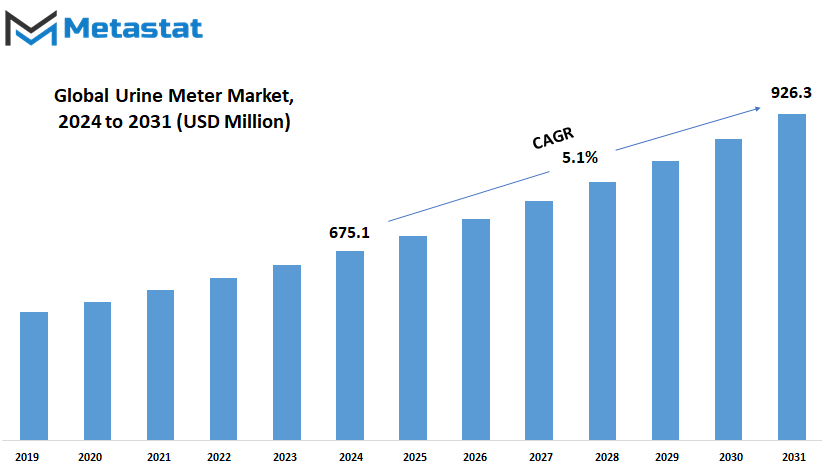
GROWTH FACTORS
Global Urine Meter Market The years ahead will be very challenging as well as rewarding for this market, as there would be changes and improvements of the current scenario. Growing patients with chronic kidney diseases as well as diabetes requires strict monitoring of kidney functions. These have been increased lately due to lifestyle changes, aging populations, and also due to various reasons emphasizing the use of a sound diagnostic tool. There will be a steady increase in the demand for urine meters as healthcare systems move toward better outcomes.
Another important factor contributing to this growth is the rising awareness of patient health monitoring, particularly in critical care settings. In environments where precision and timely intervention are crucial, urine meters play a vital role in assessing patients' fluid balance and organ function. This heightened awareness, coupled with advances in medical technology, has encouraged the adoption of urine meters across hospitals and specialized care units.
Despite these positive trends, some challenges might obstruct the progress of the market. For instance, with advanced urine meters, there can be high maintenance costs, discouraging some healthcare providers from using them. Technical faults in these devices can lead to a lack of assurance about their reliability. Again, the affordability and access to urine meters in a low-resource setting is an issue. There are also many health care facilities in such regions that lack funds or trained personnel to efficiently utilize these devices, and that may delay their acceptance in the world.
The Global Urine Meter market is, however full of new opportunities for innovation and growth. One of the most promising trends is the increasing emphasis on remote patient monitoring. Digital health platforms, in turn, enable integration of urine meters with systems for real-time management of data and improved care of the patient. With that integration, healthcare providers may acquire more accurate and timely information, enhancing their decision-making and outcome. This vision for monitoring patients fits with the trend toward personalized, technology-based health care.
The Global Urine Meter market is expected to grow as more chronic diseases are imposed on society, and monitoring in critical care becomes a focal point. Of course, challenges persist; cost and accessibility still continue to present significant issues, but technology integration could unlock the way forward for future innovation and growth. Currently, with these limitations being addressed and emerging opportunities harnessed, this market promises a revolution in the care of patients around the world.
MARKET SEGMENTATION
By Type
The Global Urine Meter market is undergoing rapid progress that is triggered by changing needs in healthcare and innovation in the medical sector. As the global population increases and ages, there is an emphasis on fluid balance for critically ill patients. As a result, there is increased demand for urine meters in every healthcare facility. The type categorizes this market. They include portable urine meters, non-portable urine meters such as the ones in hospitals that have grades, wireless urine meters made possible by IoT technology, single-use or disposable urine meters, and reusable or long-term use urine meters.
Portable urine meters are popular because of convenience and ease of use in most healthcare environments. Such convenience is also realized in outpatient and home care settings. They are light weight and mobility-designed for, targeting patients requiring fluid monitoring without being held to any particular location. Nonportable urine meters, including those used in hospitals, have advanced features to be implemented in intensive care units or high-dependency areas because these systems will provide specific and continuous data, important for the treatment of cases.
There has been a significant step taken through the use of Internet of Things (IoT) technology in wireless urine meters, which enhances the possibility of monitoring. Real-time data sharing with healthcare providers allows for better decision-making and reduces the chances of complications due to delayed intervention. As IoT is fast becoming a standard technology to be used, the trend of wireless urine meters becoming a standard tool in the smart healthcare system will surely continue.
Hygienic and cross-contamination concerns are addressed by the single-use or disposable urine meters. These are used in emergency or isolation situations where infection prevention is very important. On the other hand, reusable urine meters are used for patients requiring long-term care. The focus of these is durability and economy, which makes them more suitable for chronic conditions or extended hospital stays.
Looking forward, the Global Urine Meter market is likely to be further diversified as companies respond to emerging needs and regulatory requirements. Innovations like AI integration and improvement in material sciences may also increase the accuracy, usability, and sustainability of such devices. As the world healthcare sector increasingly focuses on personalized and precise patient care, urine meters are poised to play a crucial role in enhancing outcomes and efficiency.
The future for the global urine meter market depends on balancing technological innovation with affordability and accessibility. It will allow these devices to be available to diverse populations and increase health management worldwide.
By Distribution Channel
The Global Urine Meter market is likely to witness immense growth in the near future, propelled by developments in healthcare technologies, awareness regarding health monitoring, and growing demand for effective diagnostic tools. Urine meters, being critical for accurate measurement of urine output in many medical conditions, have become indispensable in modern healthcare practices. The future of this market will be shaped by its distribution channels, as these have a critical role in the accessibility and efficiency with which such devices are delivered to the end user.
Hospitals and healthcare providers are one of the main distribution channels for urine meters. With the growing chronic diseases and the necessity for real-time monitoring, advanced urine meters are being widely used in hospitals to offer high-quality care to the patient. These devices play an important role in the critical care setting where accurate measurement will prevent complications and guide treatment. As the healthcare infrastructure keeps evolving, this market segment is expected to see high growth.
The next significant part of the market consists of medical device retailers and distributors. They help to bridge the gap between manufacturers and end users. Devices are made available throughout different regions, and its importance is increased by catering to both urban and rural healthcare centers, which make it a critical player In the growth of the market. Moreover, these retailers provide education and training in the use of devices, which can significantly increase the adoption rate.
Online healthcare platforms have created a new dimension for the Global Urine Meter market. It provides ease, making consumers able to choose a wide variety of medical devices. The sales in online will be higher in the coming years because more integration of e-commerce with healthcare and its application is found in those regions that are undergoing digital transformation. Availability of user-friendly interface and competitive price increases appeal for the product on online platforms.
The direct sales of OEM manufacturers contribute substantially to the market. They provide customized solutions while communicating directly with healthcare facilities and respond to specific needs with the best possible solutions, building trust and encouraging long-term relationships that are fundamental for sustainable market presence.
In fact, pharmaceutical retail chains emerge as a source of important distribution. Frequently, such chains are now one-stop shops for meeting healthcare requirements, combining both accessibility with quality assurance. With increased demand for a compact, portable urine meter, pharmaceutical retail chains remain an important channel to match consumer expectation.
Overall, the Global Urine Meter market will prosper, as the distribution channels will contribute significantly to making the product more widely adopted and accessible.
By Application
The Global Urine Meter market is set to grow steadily in the coming years due to expanding use in a wide spectrum of medical and research applications. This market plays an important role in modern medicine by providing accurate and efficient urine measurement, which will be critical in diagnosing and managing a variety of conditions. Through catering for diverse applications, the market has positioned itself as one of the critical components toward enhancing patient care and aiding medical research.
Monitoring urine output is essential in healthcare, especially in critical care. Patients in the intensive care unit require accurate fluid balance measurements to assess kidney function and detect potential complications. Urine meters deliver real-time and reliable data that can be used for this purpose. The same is true for urological monitoring, especially for patients with kidney-related conditions. Accurate urine measurements help doctors track the progression of such diseases and adjust treatment plans accordingly.
The monitoring of the patient post surgery is another important area. Patients recovering from major surgeries need adequate hydration and an effective urinary system. This can be quite easily achieved by the health care team using urine meters to diagnose and treat early. Monitoring hydration and fluid balance is also crucial in patients across all ages including pregnant women and geriatric patients. For expectant mothers, such monitoring ensures both maternal and fetal health, while in older adults, it helps manage chronic conditions and supports overall well-being.
The Global Urine Meter market also caters to specific needs of pediatric and neonatal care. In the sensitive populations, maintaining appropriate hydration levels is crucial; urine meters are used with the precision required for high-quality care. Research-related applications expand the scope further, thereby contributing to breakthroughs in urology and fluid management research studies. As part of discoveries in medicine, urine meters thus contribute significantly to the practices of future health care.
In the future, technology will be improved, and urine meters will become more functional and accessible. Advances such as integration with electronic health records, better portability, and precision may increase their use in home care settings beyond the hospital. This growth potential underscores the significance of the Global Urine Meter market in addressing current and emerging healthcare challenges. With patient-centric care continually on the rise, demand for accurate and easy-to-use urine measurement solutions is likely to keep this market at the forefront of medical innovation.
By End-User
The Global Urine Meter market is looking forward to a significant expansion in the coming years as the healthcare technologies are upgrading and the demand for the efficient medical tools is going up. Urine meters are very important in observing the fluid output of the patients, especially in cases of critical care. Its utility is seen in a range of healthcare settings, guaranteeing accurate measurements that contribute to the diagnosis and treatment of many health conditions. As there is an increasing focus on accuracy in patient care, the use of urine meters will increase gradually.
The Global Urine Meter market is segmented into hospitals, clinics, home healthcare providers, research and diagnostic laboratories, elderly care facilities, and rehabilitation centers based on end-user. Hospitals are a major segment, as they are the main centers for acute care and surgical interventions where fluid balance monitoring is necessary. Clinics are also adding to the market as portable urine meters are increasingly used for outpatient monitoring. Home healthcare providers are emerging rapidly as a key segment, reflecting a shift towards home-based care for chronic patients, driven by a preference for convenience and cost-effectiveness. Urinal meters are an important analytical tool in research and diagnostic laboratories for the analysis of fluid levels and understanding patterns of disease. With research going on in medicine, the need for accurate, precise instruments is likely to increase, Thus boosting this market. The other main contributor is elderly care and rehabilitation centers. Such settings tend to accommodate patients with chronic medical conditions, making the urinal meter a daily essential for monitoring health recovery.
Into the future, the Global Urine Meter market will gain from innovation-advancements such as digitally enhanced meters with real-time monitoring capabilities. This increases the accuracy and also opens avenues for better integration of electronic health records, for smooth patient care. Increase in the aging population, as well as chronic disease increases, globally, will have a positive impact on expansion. In addition, the thrust of better efficiency by health care systems around the globe will increase the demand for more reliable and user-friendly devices such as urine meters.
The manufacturers developing more eco-friendly and disposable meters may find significant opportunities with the increasing priority for sustainability in health care. In all the end-user categories, the market’s trajectory is indicative of sustained growth, which technology is shaping. Ongoing concentration on patient-centric care and precision tools makes Global Urine Meter Market a critical part of current health care systems.
|
Forecast Period |
2024-2031 |
|
Market Size in 2024 |
$675.1 million |
|
Market Size by 2031 |
$926.3 Million |
|
Growth Rate from 2024 to 2031 |
5.1% |
|
Base Year |
2022 |
|
Regions Covered |
North America, Europe, Asia-Pacific Green, South America, Middle East & Africa |
REGIONAL ANALYSIS
The global Urine Meter market is an important segment in the healthcare industry, providing accurate urine output measurement for patients receiving medical care. The market is divided into different regions, each having unique growth patterns that are influenced by health care, economic conditions, and demographic trends. Regional dynamics, therefore, give a better view of how the market will change in the future.
North America is one of the most significant regions in the global Urine Meter market. The region has a strong healthcare infrastructure, consistent investment in medical technologies, and high patient care focus. Each of these countries-United States, Canada, and Mexico-has a specific role in influencing this growth. The U.S. leads in innovation due to its advanced healthcare facilities and significant presence of key industry players. Canada and Mexico complement the region with their expanded healthcare services, which are further accelerated through increasing demand for efficient patient monitoring solutions.
Europe also offers a similar promising scenario for the Urine Meter market. The UK, Germany, France, and Italy have a long history of striving for better healthcare outcomes. In Germany, technological advancements; in the UK, R&D, all contribute to the demand for modern devices for urine measurement. Other European countries also add to the growth of the market by incorporating innovative medical devices into their healthcare systems and with government initiatives to improve patient care.
Emerging Market for Urine Meter : A fast-emerging region from an Asia-Pacific perspective. Chinese, Indian, Japanese, and South Korean healthcare are showing great improvement in availability and quality. Increasing demographics and prevalence of chronic illness in need of hospitalization further open avenues for market development. The potential of Chinese and Indian markets is seen to be quite great considering their massive population and increasing governmental measures to improve medical structure.
South America is another promising region, with the market leaders being Brazil and Argentina. Investments in upgrading healthcare infrastructure and creating an awareness about high-tech medical equipment are the key catalysts. The Middle East & Africa region is emerging as another promising one, with the GCC countries investing heavily in healthcare for its growing populations. South Africa and Egypt are emerging markets yet to be tapped.
The global Urine Meter market is expected to continue its growth with technological advancements, rising healthcare demands, and strategic regional developments. To understand these geographical influences, stakeholders will need to make informed decisions in this ever-changing sector.
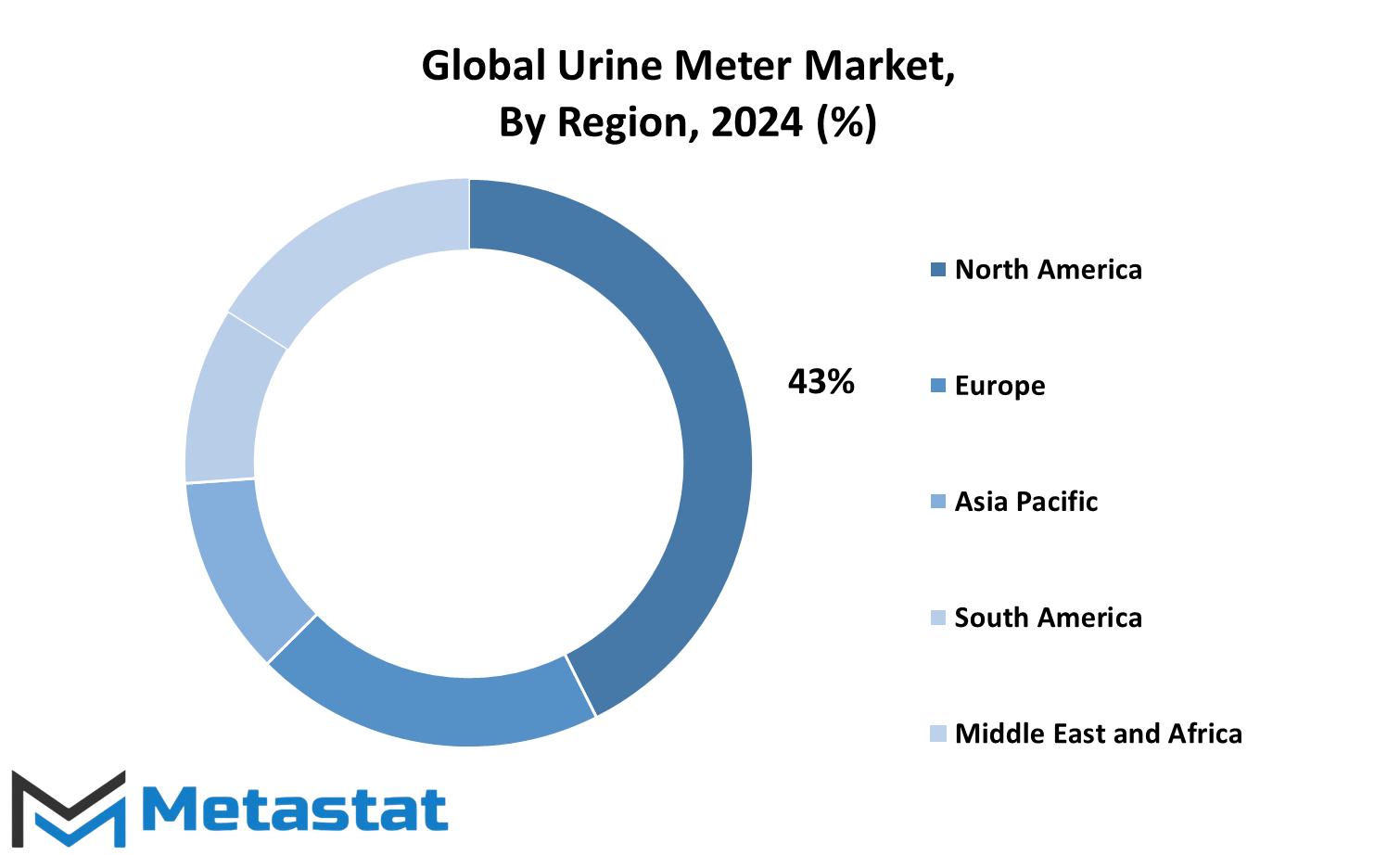
COMPETITIVE PLAYERS
The Global Urine Meter market will experience great growth because advanced patient care and monitoring are key priorities in healthcare systems all around the world. The correct measurement of urine output has been crucial in managing the critically ill and in keeping track of the patient’s kidney function. Technological advancements in medical devices continuously change them, and it is the strategy of innovation by the key players to meet growing demands. Companies like Medtronic Plc, Teleflex Incorporated, and Smiths Medical are pushing innovation by making their products precise, user-friendly, and reliable. This will ensure solutions in the company’s line can be used in virtually any healthcare setting, such as intensive care units and post-operative recovery rooms.
With the increasing population aging coupled with high rise in chronic diseases such as kidney disorder and heart failure, this demand is also supposed to increase for correct fluid balance monitoring devices. Global Urine Meter market has of late experienced growing competition in companies such as C.R. Bard, Inc. that is now a subsidiary of BD, Medline Industries, Inc., and Hitec Medical Co., Ltd. Because each of the companies is putting much effort into research and development. Their focus areas are improving the product in terms of efficiency, strength, and compatibility with systems already existing in the health sector. These companies are now integrating antimicrobial materials and automated recording of data with keeping in mind the new trend of infection control and data-driven healthcare.
Future Scope
The Global Urine Meter market is expected to be largely driven by collaborations, mergers, and acquisitions in the future. Companies like ConvaTec Group plc and Hyupsung are looking for partnerships to expand their global reach and enhance their product offerings. Smaller players like Jamjoom Medical Industries (JMI) and Well Lead Medical Co., Ltd. Are also doing well, using innovative designs to capture niche market segments. More to that, local manufacturers like Shenzhen Million Medical Instrument and Jiangsu Kangjin Medical Instrument are further diversifying the market, as they are responding to the requirements of regional health care organizations.
Sustainability is the other significant aspect that would impact the Global Urine Meter market. With more consciousness about environmental effects, more manufacturers have started adopting environment-friendly materials and production processes. The momentum of this trend will go up with the greater goals of the industry to reduce waste and promote sustainability. As such key players as Honod Medical Co., Ltd., Belpro Medical Inc., and Clinisupplies are in the process of adaptation with these changing dynamics, so the market is expected to continue to grow and be more sophisticated and sustainable to healthcare providers across the world.
Urine Meter Market Key Segments:
By Type
- Portable Urine Meters
- Non-portable Urine Meters (e.g., Hospital-Grade Systems)
- Wireless Urine Meters (IoT-enabled)
- Single-Use/Disposable Urine Meters
- Reusable/Long-Term Use Urine Meters
By Distribution Channel
- Hospitals and Healthcare Providers
- Medical Device Retailers and Distributors
- Online Healthcare Platforms
- Direct Sales (OEM Manufacturers)
- Pharmaceutical Retail Chains
By Application
- Monitoring Urine Output (for Critical Care)
- Urological Monitoring (e.g., for kidney patients)
- Post-Surgical Monitoring
- Monitoring Hydration and Fluid Balance
- Pregnancy-Related Monitoring
- Pediatric and Neonatal Care
- Geriatric Care
- Research Applications
By End-User
- Hospitals
- Clinics
- Home Healthcare Providers
- Research and Diagnostic Laboratories
- Elderly Care Facilities
- Rehabilitation Centers
Key Global Urine Meter Industry Players
- Medtronic Plc
- Teleflex Incorporated
- Smiths Medical
- C.R. Bard, Inc. (Now part of BD)
- Medline Industries, Inc
- Hitec Medical Co., Ltd
- ConvaTec Group plc
- Hyupsung
- Honod Medical Co.,Ltd.
- Belpro Medical Inc
- Jamjoom medical industries (JMI)
- Well Lead Medical Co., Ltd
- Shenzhen Million Medical Instrument
- Jiangsu Kangjin Medical Instrument
- Clinisupplies
WHAT REPORT PROVIDES
- Full in-depth analysis of the parent Industry
- Important changes in market and its dynamics
- Segmentation details of the market
- Former, on-going, and projected market analysis in terms of volume and value
- Assessment of niche industry developments
- Market share analysis
- Key strategies of major players
- Emerging segments and regional growth potential



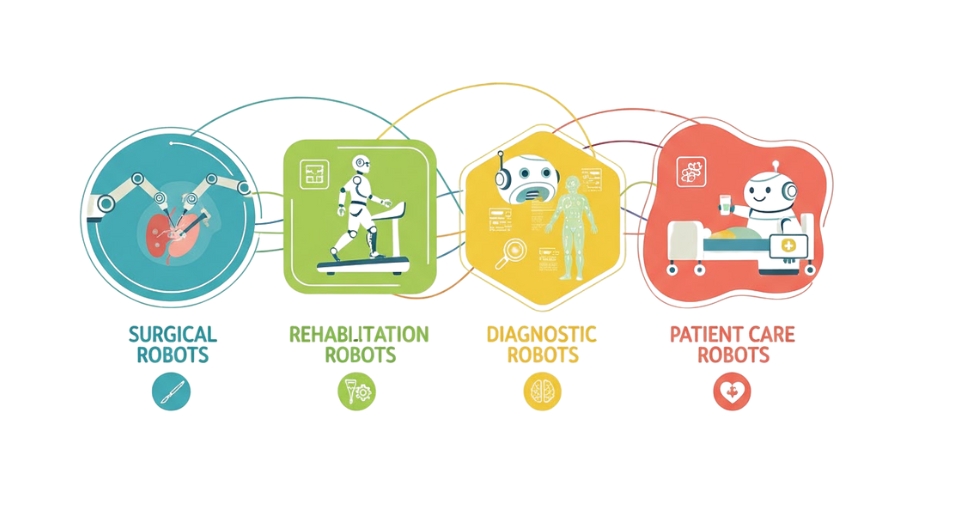
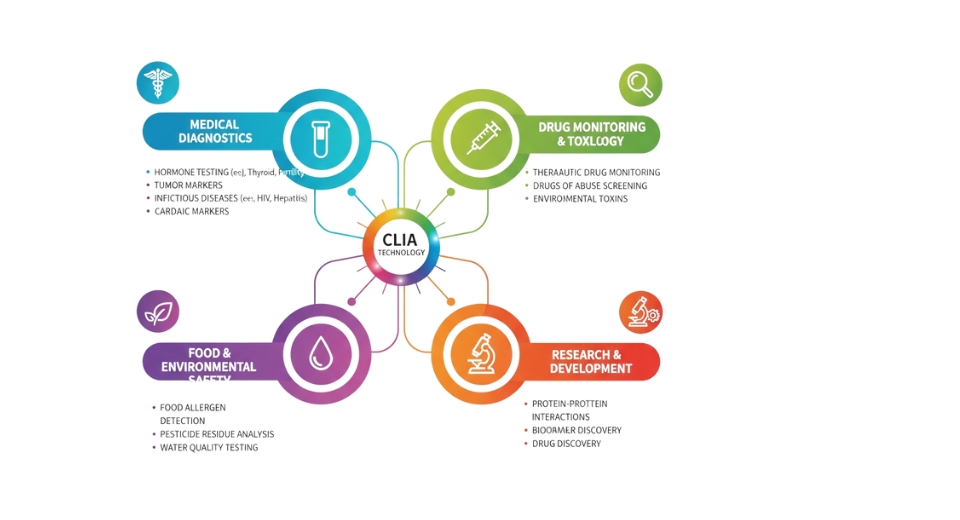

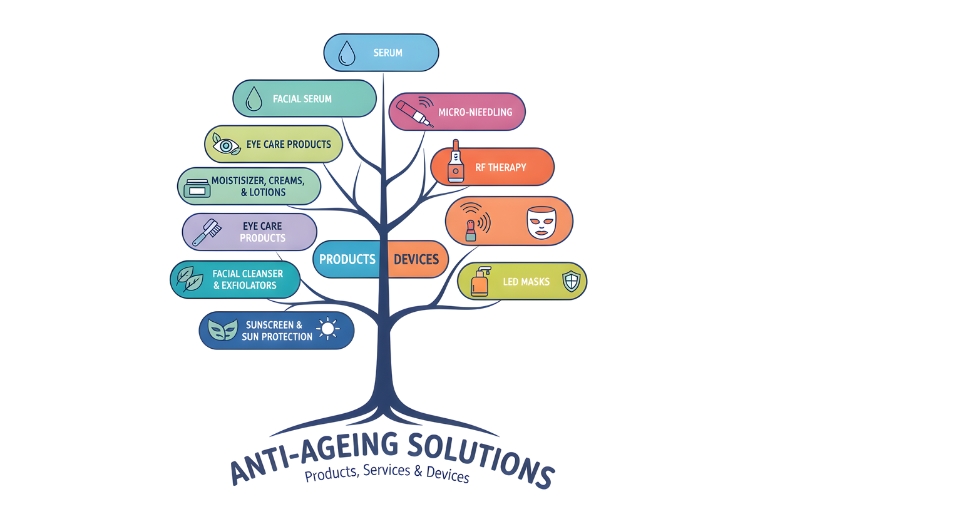

 US: +1 3023308252
US: +1 3023308252






